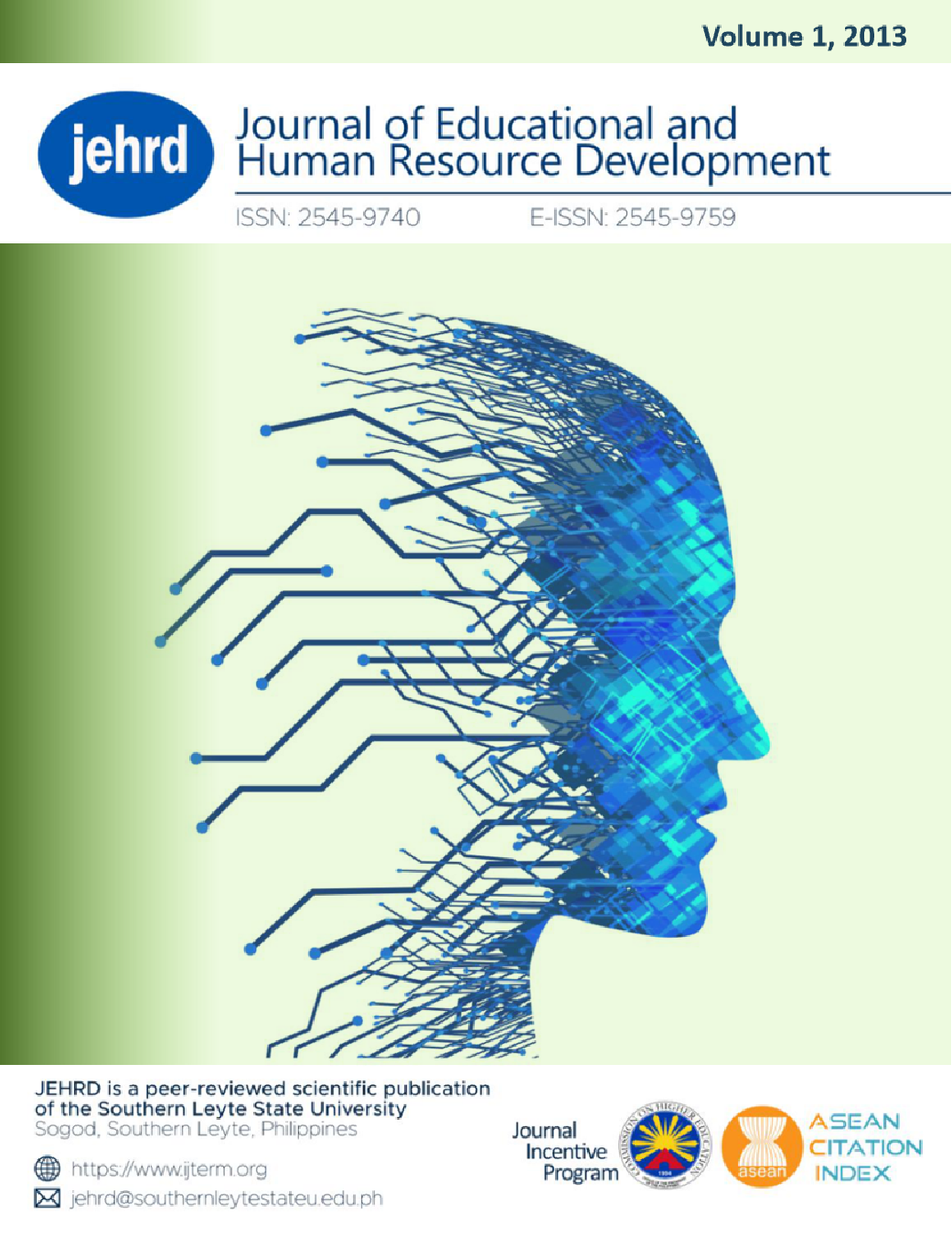THE IMPLEMENTATION AND PRACTICES OF FACULTY DEVELOPMENT PROGRAM OF SUCs
DOI:
https://doi.org/10.61569/d3qsmt69Keywords:
faculty development program, implementation, best practicesAbstract
This study looked into the implementation of Faculty Development Program (FDP) of State Universities and Colleges in the Provinces of Leyte including their considered best practices. The main instrument was a researcher-made questionnaire which underwent the process of validation, pilot-testing, and reliability test deduced from the 93 regular faculty members of Eastern Visayas State University, Visayas State University, and Southern Leyte State University. Male and female faculty members were almost equal in number. Majority were holders of Doctoral degree but were still Instructors with no designations. They were between 46–50 years of age and had 21 or more years of experience as teachers. They were mostly Catholics. On the average, 52.69% of them availed the FDP provisions. They considered assistance in Thesis/Dissertation writing and opportunities for service credits, field trips, socializations, sports and other recreational activities as best practices. They understood the policy on requirement and allocation of scholarship assistance. The administration is generally supportive, and monitoring scheme existed. Budget allocation, policy dissemination, faculty orientation, and monitoring procedures were the observed limitations of the FDP. Thus, SUCs in Leyte made efforts in promoting the implementation of FDP because it is functional and best practices were identified. To address the gaps observed, an improved FDP for the next five years is proposed.
Downloads
Published
Issue
Section
License

This work is licensed under a Creative Commons Attribution 4.0 International License.
This is an open access article distributed in accordance with the Creative Commons Attribution 4.0 Unported (CC BY 4.0) license, which permits others to copy, redistribute, remix, transform and build upon this work for any purpose, provided the original work is properly cited, a link to the license is given, and indication of whether changes were made. See: Creative Commons Attributions 4.0 International License.








